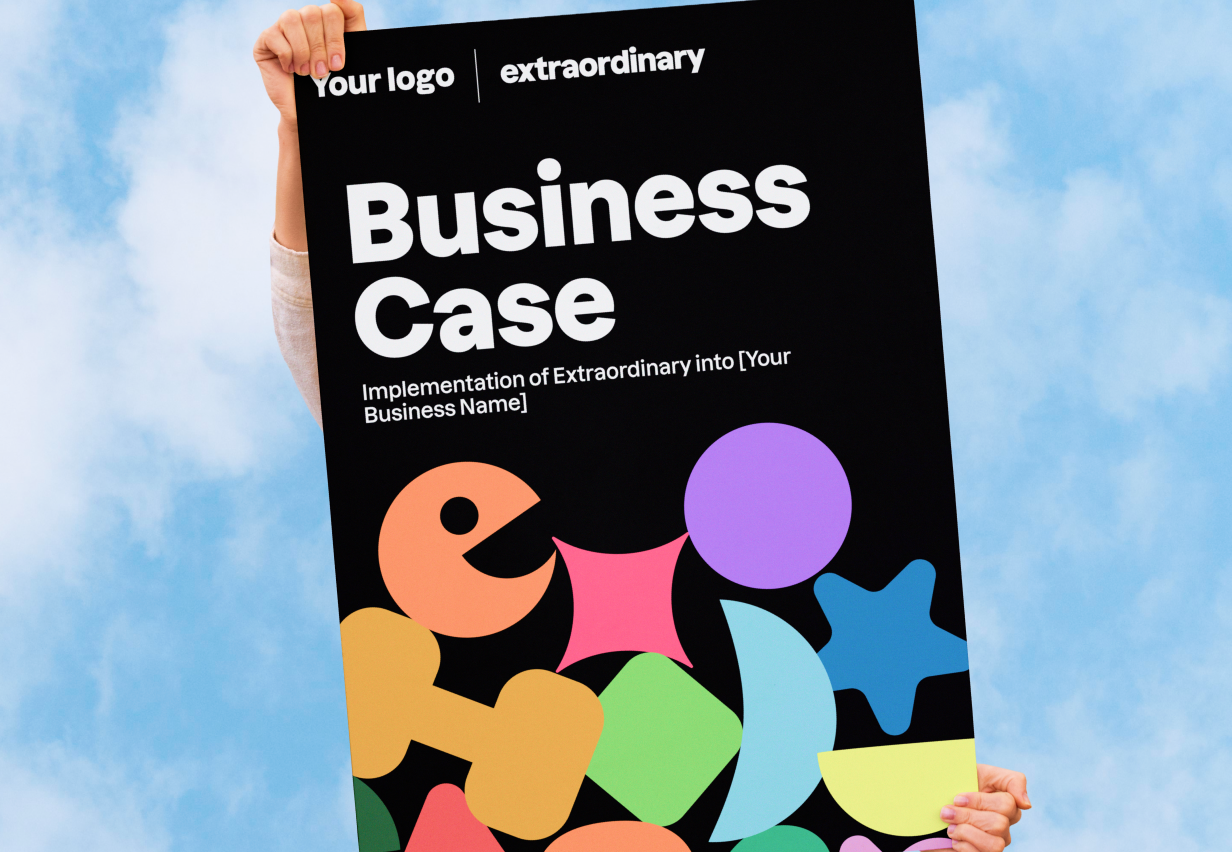Webinars & Events
The Science of Happiness and Its Growing Role in Organisations

Happiness is often seen as something personal – a goal we each pursue in different ways. But what if it was more than that? What if happiness could actually become a core business metric that drives better performance, engagement, and retention?
At Extraordinary, we recently had the privilege of hosting Declan Edwards, a happiness researcher and the founder of BU Happiness College, to dive into the growing role of happiness in the workplace. In this blog, we’ll explore how organisations can start viewing happiness not as a “nice-to-have” but as a strategic asset that contributes to the success of the entire company.
Understanding Happiness in the Workplace
Happiness, according to Edwards, isn’t some fleeting feeling – it’s a skill that can be learned. At the heart of the conversation was positive psychology, the research field that focuses on what makes life worth living. It’s not just about feeling good in the moment; it’s about building deeper, more stable aspects of wellbeing, like emotional intelligence, resilience, and purpose.
Edwards stressed that happiness is learnable and practical; it’s not just a feel-good concept. When employees develop the emotional skills to handle challenges, stay resilient in high-pressure environments, and work with self-awareness, they thrive. And, when they thrive, so does the business. It’s clear that for organisations looking to foster a high-performance culture, happiness isn’t just a soft skill; it’s a core capability that directly impacts results.
The Rise of Happiness as a Business Metric
Historically, employee happiness might have been seen as a “nice-to-have” by some. However, according to Edwards, we’re at a turning point. Happiness is no longer an abstract concept or a bonus. It’s now a business driver.
Research supports this shift. Companies that prioritise employee happiness see increased productivity, lower turnover rates, and higher employee engagement. And it makes sense. Happy employees are more likely to stay with the company, collaborate effectively, and contribute to an overall positive workplace culture. In fact, studies show that happy employees are 12-20% more productive than their unhappy counterparts.
So, measuring and investing in happiness isn’t just about making employees feel good; it’s a strategic decision with clear business outcomes.
Measuring Happiness: A New Kind of KPI
Edwards introduced a powerful concept: happiness as a Key Performance Indicator (KPI). Measuring happiness through tools like employee surveys, feedback loops, and happiness diagnostics gives organisations actionable insights that can be directly linked to performance outcomes. When organisations start using happiness as a KPI, they can track employee wellbeing and make data-driven decisions to improve overall engagement and productivity.
This approach also means organisations can measure the success of their happiness initiatives over time and adjust where necessary. Tracking happiness can also reveal hidden issues within the company culture or leadership that might be affecting employee satisfaction, providing an opportunity for proactive change.
Why Happiness Should Be on Your Business Agenda
There’s no denying it: prioritising happiness in the workplace has a real business case. Edwards highlighted a few key reasons why organisations should make happiness a top priority:
- Higher Financial Performance: Research shows that companies with a happy workforce outperform others. These companies typically see higher profits, better stock performance, and improved long-term financial outcomes.
- Reduced Turnover: It costs a lot to replace employees. Happy employees are more likely to stay, saving companies money on recruitment and training. This retention also helps preserve institutional knowledge, making for a more stable organisation.
- Increased Productivity: Happy employees are more productive. This directly translates to higher output, more innovative ideas, and better overall business performance.
A Holistic Approach to Building Happiness at Work
Edwards made an important point: creating happiness in the workplace isn’t about a one-size-fits-all solution. It’s about taking a holistic approach that looks at emotional, psychological, and social wellbeing.
A big part of this is leadership. When leaders prioritise happiness, it sets the tone for the entire organisation. Leaders who lead with empathy, emotional intelligence, and resilience create an environment where employees feel valued and supported. And when employees feel supported, they’re more likely to be engaged, productive, and loyal.
Learn how to build trust and success in your leadership role.
The Future of Happiness in the Workplace
Looking ahead, it’s clear: Happiness will continue to play a key role in shaping the future of work. The companies that recognise happiness as a critical business driver and actively measure and invest in it will see better engagement, retention, and performance.
In today’s fast-paced, constantly changing world, organisations that focus on creating environments where employees can thrive – not just survive – will be the ones leading the way. After all, it’s no longer just about creating a workplace that people want to be in; it’s about creating one that drives business success.
Extra Resources

A Holistic Approach to Building Happiness at Work
Edwards made an important point: creating happiness in the workplace isn’t about a one-size-fits-all solution. It’s about taking a holistic approach that looks at emotional, psychological, and social well-being.
A big part of this is leadership. When leaders prioritise happiness, it sets the tone for the entire organisation. Leaders who lead with empathy, emotional intelligence, and resilience create an environment where employees feel valued and supported. And when employees feel supported, they’re more likely to be engaged, productive, and loyal.
The Future of Happiness in the Workplace
Looking ahead, it’s clear: Happiness will continue to play a key role in shaping the future of work. The companies that recognise happiness as a critical business driver and actively measure and invest in it will see better engagement, retention, and performance.
In today’s fast-paced, constantly changing world, organisations that focus on creating environments where employees can thrive—not just survive—will be the ones leading the way. After all, it’s no longer just about creating a workplace that people want to be in; it’s about creating one that drives business success.







